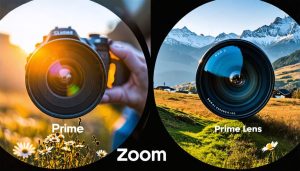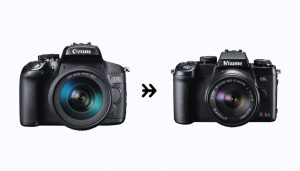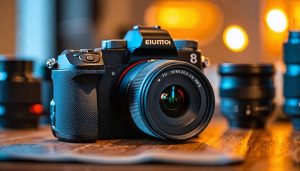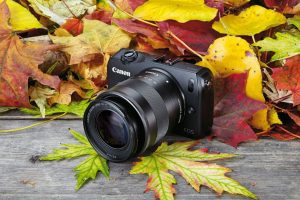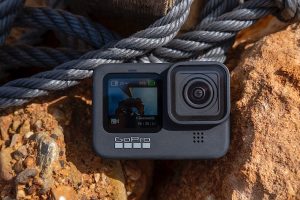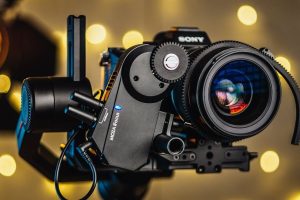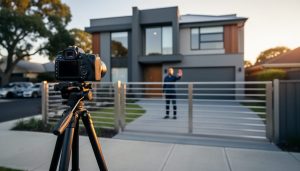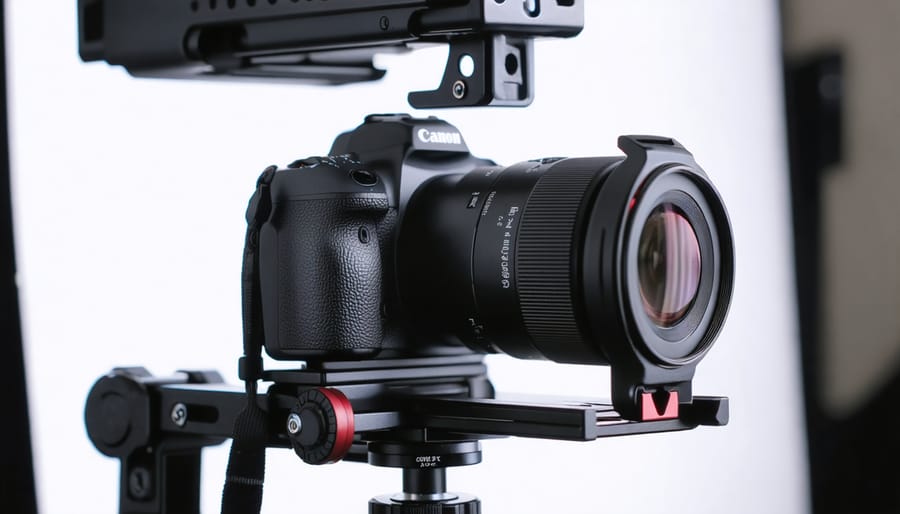
Choose lenses with smooth, silent autofocus motors—STM or nano USM technology prevents distracting motor noise from contaminating your audio tracks. Prioritize optical image stabilization over digital solutions, especially for handheld shooting where even subtle camera shake becomes magnified in video playback. Look for aperture rings or bodies that allow stepless aperture adjustments, eliminating the exposure jumps that ruin professional footage.
The lens you mount determines video quality more than your camera body ever will. While Canon’s cameras capture excellent video, pairing them with subpar glass creates soft footage, excessive focus hunting, and that amateur “breathing” effect where the frame shifts during focus transitions. Understanding what separates competent video lenses from exceptional ones—and knowing which specific models deliver at your budget—transforms your production value immediately.
Video demands different characteristics than stills photography. Continuous autofocus performance matters more than single-point accuracy. Smooth manual focus rings with proper dampening become essential for controlled rack focuses. You’ll need to consider whether prime versus zoom lenses better suits your shooting style—primes offer superior optical quality and wider apertures, while zooms provide shooting flexibility without lens changes that interrupt recording flow.
This guide breaks down Canon’s best video lenses across budgets, explains the technical factors that matter specifically for moving images, and helps you match the right glass to your camera body and creative goals.
What Makes a Great Video Lens Different from a Stills Lens
When you’re shopping for Canon lenses, you’ll quickly discover that what works beautifully for photography doesn’t always translate to smooth, professional-looking video. The difference comes down to several technical characteristics that directly impact your footage quality.
**Smooth Aperture Transitions**
Picture this: you’re filming a wedding ceremony as natural light shifts through stained glass windows. A photography lens will suddenly “step” the aperture, creating jarring brightness jumps in your footage. Video-optimized lenses feature smoother, more gradual aperture changes that your audience won’t even notice. This matters especially during long takes where lighting conditions evolve naturally.
**Silent, Smooth Autofocus**
Canon’s STM (Stepping Motor) and Nano USM technologies represent game-changers for video shooters. Traditional USM motors, while lightning-fast for stills, often sound like tiny lawnmowers on your audio track. I learned this the hard way filming a quiet interview with my trusty 50mm f/1.8 II—every focus adjustment was clearly audible in the final cut. STM lenses, by contrast, focus almost silently while moving smoothly through focus transitions rather than hunting back and forth.
**Minimal Focus Breathing**
Focus breathing occurs when a lens subtly “zooms” as you rack focus between subjects. While photographers rarely notice this, it’s distractingly obvious in video. Professional cinema lenses virtually eliminate this phenomenon, and Canon’s better video lenses minimize it significantly. Compare footage side-by-side: a lens with pronounced breathing makes your frame appear to pulse, while a well-designed video lens maintains consistent framing throughout focus pulls.
**Effective Image Stabilization**
Canon’s IS (Image Stabilization) technology has evolved considerably for video work. Modern implementations offer smooth, natural-looking stabilization without the “jello effect” that plagued earlier systems. When shooting handheld interviews or run-and-gun documentary work, IS becomes invaluable for maintaining professional-looking footage without requiring a gimbal.
**Consistent Rendering**
Video lenses maintain consistent color, contrast, and sharpness characteristics throughout zoom ranges and focus distances. This consistency simplifies color grading and ensures your footage matches seamlessly during editing—critical when you’re cutting between different focal lengths in the same scene.
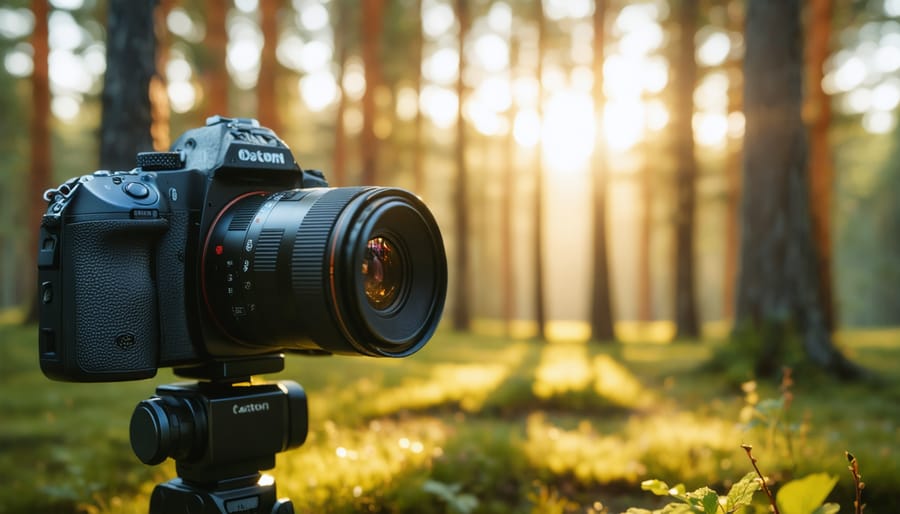
Best Budget-Friendly Canon Lenses for Video (Under $500)
Canon EF-S 24mm f/2.8 STM: The Compact Wide-Angle Wonder
If you’re shooting vlogs or need a lens that practically disappears on your camera, the EF-S 24mm f/2.8 STM deserves serious consideration. This pancake lens measures barely an inch thick, making it perfect for gimbal work or run-and-gun situations where every ounce matters.
The 24mm focal length on APS-C sensors gives you approximately 38mm equivalent—wide enough for environmental context without the distortion issues of ultra-wide lenses. I’ve used this lens extensively for documentary work in cramped interiors, and it consistently delivers sharp footage with pleasant color rendering.
The STM motor provides smooth, nearly silent autofocus during video recording, though you’ll want to enable Movie Servo AF for best results. At f/2.8, you get decent low-light performance and some background separation, though don’t expect the creamy bokeh of faster primes. The wide aperture does help when shooting indoors without additional lighting.
For the budget-conscious videographer, this lens punches well above its price point. Its compact form factor encourages you to actually bring it along, and the optical quality holds up beautifully even on modern 4K sensors. Just remember it’s designed for crop-sensor bodies only—it won’t work on full-frame Canons.
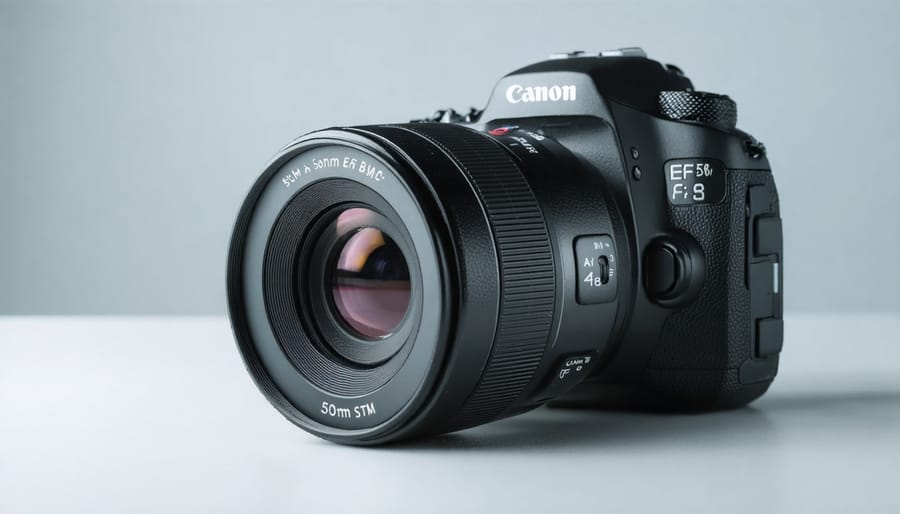
Canon EF 50mm f/1.8 STM: The Classic Video Workhorse
Often called the “nifty fifty,” the Canon EF 50mm f/1.8 STM punches well above its modest price point for video work. This lens has become a staple on film sets and YouTube studios alike, delivering that coveted shallow depth-of-field look that instantly elevates production value. The wide f/1.8 aperture creates beautiful background separation, making your subject pop during interviews or narrative scenes.
The STM (Stepping Motor) autofocus operates quietly—a crucial advantage when recording audio—and it’s surprisingly smooth for the price. In practice, you’ll find this lens particularly effective for talking-head videos, documentary interviews, and any medium-shot work where you want cinematic bokeh without breaking the bank.
However, understand its limitations. On crop-sensor cameras, the equivalent 80mm field of view can feel tight in smaller spaces, requiring you to step back considerably. The all-plastic construction feels less robust than premium lenses, though it does keep the weight down. Manual focus enthusiasts should note the focus ring lacks hard stops, making repeatable focus pulls challenging. For run-and-gun scenarios requiring quick framing changes, you’ll need to physically reposition yourself since prime lenses don’t zoom.
Despite these compromises, it remains an outstanding entry point for budget-conscious videographers.
Canon EF-S 10-18mm f/4.5-5.6 IS STM: Budget Ultra-Wide with Stabilization
If you’re shooting travel vlogs, real estate walkthroughs, or any video work where capturing expansive scenes matters, the Canon EF-S 10-18mm f/4.5-5.6 IS STM deserves serious consideration. This ultra-wide lens punches well above its budget-friendly price point, making it an excellent entry into wide-angle videography for APS-C shooters.
The standout feature here is the built-in image stabilization (IS), which provides up to four stops of shake reduction. This becomes invaluable when you’re shooting handheld establishing shots or walking through tight spaces without a gimbal. I’ve used this lens for interior real estate videos, and the stabilization makes a noticeable difference in creating smooth, professional-looking footage without additional equipment.
The STM (Stepping Motor) autofocus operates quietly and smoothly, so you won’t hear distracting motor noise in your audio when focus shifts. The 10-18mm range (equivalent to 16-29mm on full-frame) gives you flexibility to frame tight interiors or dramatic landscape shots with exaggerated perspective.
Real-world performance is impressive for the price. While the variable aperture means you’ll need decent lighting, and the plastic build feels less premium than L-series glass, the optical quality remains sharp across the frame. Travel videographers particularly appreciate its lightweight design—just 240 grams—which doesn’t add significant burden during all-day shoots.
For anyone shooting video on a Canon Rebel, 70D, 80D, or 90D, this lens delivers professional ultra-wide capabilities without breaking the bank.
Mid-Range Canon Lenses That Punch Above Their Weight ($500-$1500)
Canon RF 24-105mm f/4-7.1 IS STM: The All-Day Video Zoom
When you need a single lens that can handle an entire day’s worth of shooting without breaking your back or your budget, the RF 24-105mm f/4-7.1 IS STM deserves serious consideration. This lightweight zoom has become the go-to companion for wedding videographers, documentary filmmakers, and anyone who values flexibility over absolute optical perfection.
The zoom range is where this lens truly shines for video work. You can capture wide establishing shots at 24mm, then smoothly transition to medium close-ups at 105mm without swapping glass. That versatility is invaluable when you’re covering unpredictable events—whether you’re filming a corporate conference where you can’t interrupt speakers or documenting street scenes where moments don’t wait for lens changes.
The STM (Stepping Motor) autofocus operates quietly and smoothly, making it suitable for situations where you need reliable tracking without distracting motor noise in your audio. While it won’t match the blazing speed of more expensive L-series glass, it’s more than adequate for interviews, B-roll, and narrative work at a measured pace.
Image stabilization helps compensate for the variable aperture’s lower light performance, though you’ll still want external lighting for challenging conditions. At under 400 grams, you can handhold comfortably or mount it on smaller gimbals without adding counterweights. For content creators building their first serious video kit, this lens delivers impressive practical value.
Canon EF 24-70mm f/4L IS USM: The Reliable Professional Standard
When you’re running a multi-camera production or need a lens you can count on shoot after shoot, the Canon EF 24-70mm f/4L IS USM proves its worth time and again. This L-series workhorse delivers the professional build quality and optical consistency that serious video work demands, without the weight penalty of its f/2.8 sibling.
The built-in image stabilization provides up to 4 stops of compensation—a genuine advantage when you’re shooting handheld B-roll or documentary-style footage. Unlike electronic stabilization that crops your image, the optical IS maintains your full frame while smoothing out those subtle camera movements that can make the difference between amateur and professional-looking content.
The constant f/4 aperture means your exposure remains consistent throughout the entire zoom range, eliminating those awkward brightness shifts mid-shot that plague variable aperture lenses. For multi-camera setups, this consistency becomes invaluable during editing—footage from multiple bodies matches more seamlessly when you’re using identical lenses.
The macro mode (0.7x magnification) adds surprising versatility, letting you capture detailed product shots without switching lenses. Real-world example: wedding videographers particularly appreciate this feature for ring shots and detail work between ceremony coverage.
At around $600 used, it represents excellent value for professional-grade optics that’ll serve you reliably for years.
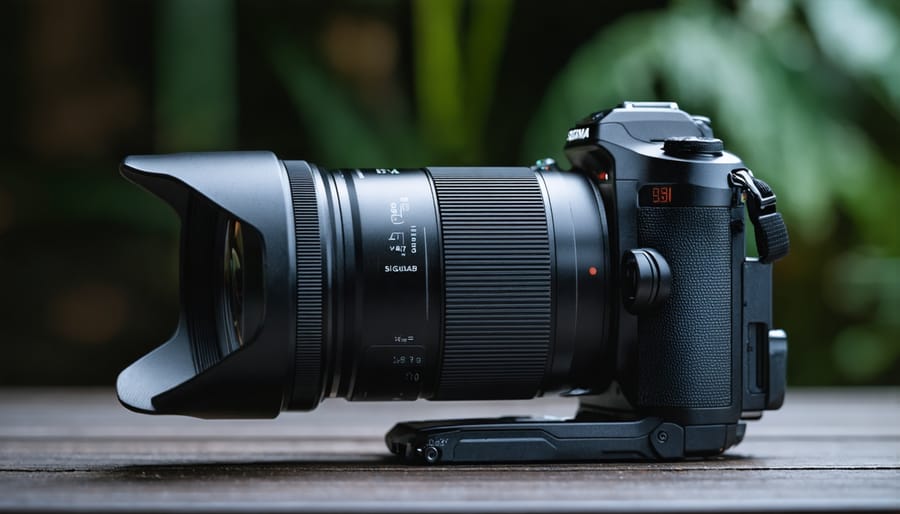
Sigma 18-35mm f/1.8 DC HSM Art: The Low-Light Speed Demon
If you’re shooting on a Canon APS-C sensor camera and need serious low-light performance, the Sigma 18-35mm f/1.8 DC HSM Art deserves your attention. This lens has achieved near-legendary status among indie filmmakers and YouTubers for one simple reason: it’s the only zoom lens in the world with a constant f/1.8 aperture.
That f/1.8 maximum aperture is a game-changer. Most zoom lenses sacrifice aperture for versatility, typically maxing out around f/2.8 or slower. The Sigma gives you prime lens light-gathering capability while maintaining zoom flexibility. In practical terms, you can shoot interviews in dimly lit cafes, capture moody cinematic footage during golden hour, or record vlogs in your apartment without needing additional lighting equipment.
The 18-35mm range (equivalent to roughly 29-56mm on full-frame) covers wide establishing shots through flattering portrait perspectives—ideal for documentary work and narrative filmmaking. The Hyper Sonic Motor delivers smooth, quiet autofocus, though many videographers prefer manual focus using this lens’s well-damped focus ring.
Real-world example: Wedding videographers frequently use this lens as their workhorse for reception coverage, where lighting conditions constantly change. The wide aperture maintains consistent exposure and beautiful subject separation throughout the event, regardless of venue lighting.
Keep in mind this lens is built for crop-sensor cameras only—it won’t cover a full-frame sensor.
Canon RF 35mm f/1.8 IS Macro STM: The Versatile Storyteller
The RF 35mm f/1.8 IS Macro STM punches well above its weight for video work. This compact prime excels at product videos thanks to its 0.5x magnification ratio—you can fill the frame with small items while maintaining beautiful background separation at f/1.8. The built-in image stabilization (up to 5 stops) means you can shoot handheld interview b-roll without introducing unwanted shake, while the STM autofocus motor tracks subjects smoothly and quietly. At around $500, it’s an affordable gateway into creative storytelling, whether you’re capturing detailed texture shots for client work or intimate documentary-style interviews where the natural 35mm field of view keeps viewers engaged without feeling claustrophobic.
Professional Cinema-Grade Canon Lenses (Over $1500)
Canon RF 24-70mm f/2.8L IS USM: The Professional’s Choice
When you’re creating content for clients or high-stakes projects, the Canon RF 24-70mm f/2.8L IS USM delivers the reliability and image quality that professionals demand. This lens represents Canon’s commitment to excellence in the mirrorless era, combining exceptional optical performance with practical features that matter on real productions.
The built-in image stabilization—offering up to 5 stops of correction, or 8 stops when paired with compatible camera bodies—transforms handheld shooting. I’ve captured rock-solid footage walking through crowded events where gimbals would be impractical, and the results look tripod-mounted. This stabilization advantage becomes especially valuable during documentary work or when you need to move quickly between setups.
The f/2.8 constant aperture throughout the zoom range ensures consistent exposure and depth of field as you reframe shots. You’re not fighting brightness fluctuations mid-take, which streamlines both shooting and post-production color grading. The lens also renders beautiful bokeh for interviews, with that professional subject separation clients expect.
Its Nano USM autofocus operates virtually silently—critical when recording audio—and the focus breathing is minimal compared to older designs. At around $2,299, it’s an investment that pays dividends through versatility, allowing you to handle corporate interviews, wedding coverage, and commercial shoots with a single, dependable lens.
Canon EF 70-200mm f/2.8L IS III USM: The Telephoto Champion
The Canon EF 70-200mm f/2.8L IS III USM represents the gold standard for telephoto video work, and for good reason. This lens delivers exceptional image quality with beautiful background compression that creates that cinematic “look” viewers associate with professional productions.
For interview work, this lens is simply outstanding. Position yourself 8-10 feet from your subject and shoot at 135-200mm for flattering facial features and beautifully blurred backgrounds that eliminate distractions. The constant f/2.8 aperture means you maintain consistent exposure throughout the zoom range—crucial when you’re adjusting framing mid-interview.
The optical image stabilization proves invaluable for handheld event coverage. Whether you’re filming a wedding ceremony from the back of the venue or capturing conference speakers, the four-stop stabilization keeps your footage smooth and professional. The near-silent USM autofocus motor transitions smoothly between subjects without that distracting whirring sound that plagues cheaper lenses.
Real-world example: documentary filmmakers frequently pair this lens with a 24-70mm to cover entire events with just two lenses. The 70-200mm handles all your detail shots, reactions, and compressed establishing shots that add production value.
Yes, it’s heavy at over three pounds, and the $2,000+ price tag isn’t insignificant. But this lens will outlast multiple camera bodies while consistently delivering broadcast-quality imagery.
Canon CN-E Prime Lenses: True Cinema Glass
If you’re serious about professional filmmaking and ready to make a significant investment, Canon’s CN-E prime lenses represent true cinema-grade optics. These aren’t your typical photography lenses adapted for video—they’re purpose-built cinema glass engineered from the ground up for motion picture production.
The CN-E line includes focal lengths like 14mm, 24mm, 35mm, 50mm, 85mm, and 135mm, all featuring a consistent T1.5 aperture (that’s how cinema lenses measure light transmission, similar to f-stops but more precise). What makes these lenses special? They feature robust metal construction, long focus throws for precise manual focusing, and minimal focus breathing—that annoying size shift you see when pulling focus on photography lenses.
Perhaps most importantly, all CN-E primes share identical gear positions for follow focus systems and maintain consistent color rendition across the entire range. This means you can swap between focal lengths during a shoot without worrying about color shifts or repositioning your rig.
The investment is substantial—each lens typically costs several thousand dollars—but for documentary filmmakers, commercial videographers, and indie filmmakers building a professional toolkit, the CN-E series delivers reliability and image quality that matches industry standards. They’re available in both EF and PL mounts, ensuring compatibility with various professional cinema cameras.
Matching Lenses to Your Canon Camera Body
Understanding which lenses work with your Canon camera body is crucial before investing in glass for video work. Canon currently operates four distinct mount systems, and knowing the differences will save you from costly mistakes.
**EF and EF-S: The DSLR Standards**
EF lenses represent Canon’s full-frame standard and work beautifully across all Canon DSLRs—both full-frame bodies like the 5D Mark IV and crop-sensor cameras like the 80D. EF-S lenses, however, are designed exclusively for crop-sensor DSLRs. While they’re more compact and affordable, they won’t physically mount on full-frame bodies. This matters for video shooters planning to upgrade down the road.
**RF Mount: The Mirrorless Future**
Canon’s RF mount powers their newer mirrorless cameras like the R5, R6, and R7. These lenses offer advanced features like faster autofocus communication and improved image stabilization coordination—significant advantages for video. The good news? You can use your existing EF and EF-S lenses on RF bodies with Canon’s official adapters, which maintain full electronic communication and even add features like control rings or variable ND filters.
**EF-M: The Compact Exception**
The EF-M mount serves Canon’s smaller mirrorless cameras (M50, M6 Mark II). While these bodies are popular with vloggers, the limited native lens selection and lack of professional cinema features make them less ideal for serious video work.
**Sensor Size Considerations**
Canon lens compatibility extends beyond physical mounting. Crop-sensor cameras (APS-C) multiply your lens’s focal length by 1.6x, turning a 50mm into an 80mm equivalent. For video, this affects your framing choices—wide angles become less wide, which matters when shooting in tight spaces.
**Future-Proofing Your Investment**
If you’re shooting on a crop-sensor DSLR but plan to upgrade eventually, investing in EF lenses makes sense—they’ll work on any future body with adapters. For mirrorless shooters, native RF lenses offer the best performance, though EF lenses with adapters remain excellent choices, especially for established cinema lenses that haven’t been replaced in the RF lineup.
Essential Lens Accessories That Improve Your Video
Even the best Canon lens won’t reach its full potential without the right accessories. Think of these as force multipliers—relatively affordable additions that can dramatically improve your video quality and workflow.
**ND Filters** are perhaps the most critical accessory for videographers. Unlike photography where you can adjust shutter speed freely, video requires maintaining the 180-degree shutter rule (shutter speed double your frame rate) for natural motion blur. Variable ND filters let you control exposure in bright conditions while keeping that cinematic shutter speed. I learned this the hard way shooting outdoors at f/1.8—my footage looked jittery and unnatural until I invested in quality NDs.
**Lens hoods** serve double duty for video work. Beyond reducing lens flare, they provide crucial protection when you’re focused on framing a shot and accidentally bump your lens against doorframes or equipment—something that happens more often than you’d think on location shoots.
**Follow-focus systems** transform manual focus lenses into precision tools. Whether you’re pulling focus between subjects or creating those smooth rack-focus effects, these systems give you the control and repeatability that separating your hand from the focus ring provides. Wireless units are particularly valuable for gimbal work or when you’re operating solo.
Consider starting with a variable ND filter—it’ll make the biggest immediate difference to your footage quality in challenging lighting situations.
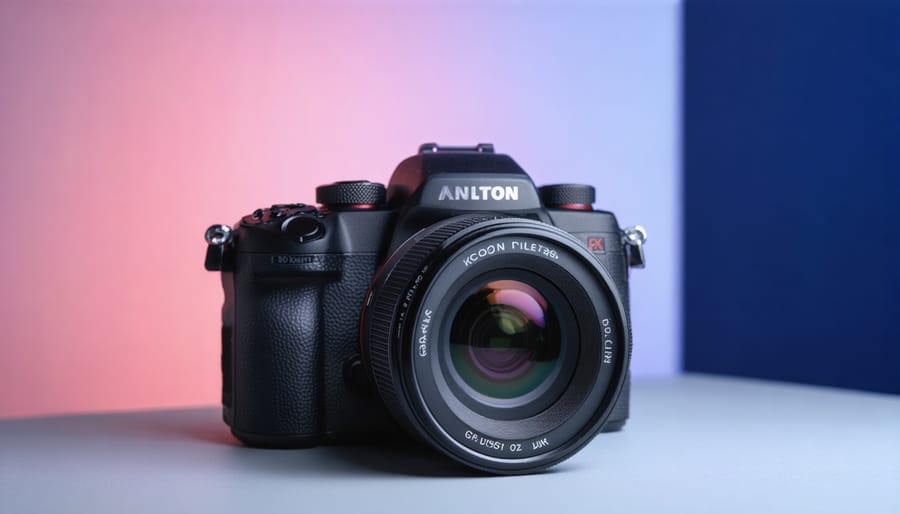
Common Video Lens Mistakes to Avoid
Even experienced videographers sometimes make lens-purchasing decisions they later regret. Let’s walk through the most common pitfalls so you can avoid them.
**Focus breathing** is perhaps the most overlooked issue. This optical quirk causes the frame to subtly shift or “breathe” when you adjust focus, creating a distracting pumping effect in your footage. Many photography-focused lenses exhibit noticeable focus breathing, which looks amateurish on video. Before committing to a lens, search for sample footage online or test it yourself with gradual focus pulls. Cinema lenses are specifically engineered to minimize this issue, but some stills lenses like the Canon RF 35mm f/1.8 IS STM perform admirably in this regard.
Another mistake is **underestimating stabilization needs**. Without a gimbal or tripod, handheld footage from non-stabilized lenses often looks unusable. If you frequently shoot run-and-gun style or documentary work, investing in lenses with optical image stabilization (IS) will dramatically improve your results. The difference between stabilized and non-stabilized footage becomes glaringly obvious when you’re trying to salvage shaky clips in post-production.
Many videographers also **choose the wrong focal length** for their actual shooting scenarios. That 50mm might seem versatile, but if you’re primarily shooting in tight indoor spaces, you’ll constantly find yourself backed against walls. Consider your typical working distances and subject matter before selecting focal lengths. A 24mm or 35mm often proves more practical for everyday video work than the classic 50mm.
Finally, resist the temptation to **buy based solely on specs**. A lens with impressive sharpness numbers might produce clinical, overly-digital footage that lacks character. Real-world performance—including how colors render, bokeh quality, and handling characteristics—matters more than test chart results. Watch actual footage shot with your prospective lens whenever possible.
Choosing the right lens for video comes down to honest self-assessment. The RF 24-105mm f/4L might be the “safest” choice for its versatility, but if you’re shooting documentary-style interviews in tight spaces, that budget-friendly EF-S 24mm f/2.8 STM could serve you better. The best lens isn’t the one with the most impressive specs—it’s the one that matches your actual shooting scenarios.
Before investing, consider what you’re filming most often. Corporate interviews? A sharp 50mm prime with smooth aperture control will deliver professional results. Event coverage? Prioritize zoom range and image stabilization. YouTube content creators might benefit more from wide apertures for background separation than from parfocal zooming capabilities.
Remember, technique trumps gear every time. A $300 lens in skilled hands will outperform a $2,000 lens used poorly. Focus on mastering manual focus pulls, understanding proper exposure, and developing your compositional eye.
Ready to make your decision? Start by renting your top two choices for a weekend shoot. Test them in your typical filming conditions, not idealized scenarios. Pay attention to how they feel in your workflow, not just how the footage looks. This hands-on experience will reveal which lens truly fits your needs—and that’s worth more than any online review.

